
|
||
|
Portland art blog + news + exhibition reviews + galleries + contemporary northwest art
|
||
An Interview with Elliott Erwitt
Posted by Jessica Bromer on March 20, 2007 at 0:50 | Comments (10) Comments more interviews please Posted by: walks out I agree! I realize that interviews, as some have said, can be 'a kind of advocacy'...but in this case, who cares! This was great and I hope there's more. Posted by: lsd That was excellent. Posted by: lastwater Does anyone else think its a little interesting that he says a responsible photographer will use a camera for "seeing what is real"? Posted by: minimum it seems generational as well as genre specific. easy to dismiss. still, it's interesting to hear someone stick to that line of thinking about photography. Posted by: melia Yes, we have more interviews lined up but we wont be diluting our critical focus, it's just an additional element we are adding to the site (other interesting additions are in the works too). Generally, the interviews will be big name artists and director/curators. The next one is a very famous painter who doesn't have a show in Portland though weve seen some of their best works on PAM"S walls in the last 3 years. The advocacy question is more of an issue for younger artists who benefit more from critcal review and being tested thus. It goes without saying that Erwitt has already proven himself, the man is a machine! Nice work Jessica. Posted by: Double J The purpose of pictures. Hmmm. Could be a trick? But it's certainly fascinating to hear different perspectives on the flat plane perception of the pictorial. Mine is so polar, though I respect the shock of the instant, that 'perfect' moment, I am sure I wouldn't have had the same interview decorum herein. It's a bit of a flashback to a bygone era as our technology has vastly changed and informed. Photographers are artists who wear a different toolbelt. Erwitt is a solid photographer in the pantheon of the medium, and though he may seem a touch old-fashioned I kind of know where he is coming from. And, I feel a bit blessed to have crossed over from the analogue to the digital, hoping to keep up with the changing of the guard along the way. Posted by: TJ Norris In a conversation with a graphic artist about the Erwitt lecture, my friend expressed an almost hostile contempt for photography as art. “You can’t interpret a photograph, you just read it”. I replied that it was ironic that Erwitt seemed to agree with his opinion considering the things he said in the lecture and Jessica’s interview. The relevant comment came when Erwitt refused to be labeled an artist in the Q and A after the lecture and in the interview. He suggested that his job is photography and being an artist is a job for someone else. Maybe I’m missing something, but this seems like a poke in the eye for the audience trying to find some justification for labeling photography as fine art. The lecture didn’t help much either. His presentation wasn’t much of a lecture, but rather a slide show, with a few aloof and sometimes acerbic comments. I’m not sorry I went and I did enjoy the experience, but it was a sharp contrast to the Jerry Uelsman lecture at the PAM back in 2004. Jerry’s presentation contained so much more humor and passion as well as a genuine attempt to connect with the audience. He is an educator and someone who believes he is an artist as well as a photographer. Maybe Erwitt understood that his audience was dominated by photographers as opposed to a more diverse group of art lovers. I doubt it would have mattered who was in the audience. His attitude seems to be what-you-see-is-what-you-get, and if that doesn’t do it for you, so be it. I think I was one of the few non-photographers in the audience and I suspect my viewpoint was shared by a very small minority. A non-photographer will look at one of Erwit’s images and ask “how did he get that picture?” A photographer will ask “how many shots did he take to get that one?” It’s about editing, not setup. Snapping pictures is the mechanics and editing is the art. The lecture was worth attending for the elegantly edited slide show, not the comments. Back to my friend’s original comment, any single Erwitt image only needs to be read for the viewer to get it. That is what makes his photos so great. His imagery is easy for most people to connect with; simple, direct, and very clever. You don’t need a lot of art savvy to understand and enjoy an Erwitt image. Discussions with people who don’t care for his work make me think that too much sophistication inhibits ones ability to appreciate these pictures. The bottom line on Erwitt’s appearance is that he is an icon for photography, not just for American photography but for all photography. The fact that we were able to get him scheduled for an event in Portland speaks volumes on the quality of the local art scene and more importantly, the national prominence of the Portland photography community. The importance of the local photo scene is generally over looked by the art going public due to this persistent disconnect between fine art and photography. I’m sorry more people have yet to hear the concise historic intro given by Terry Toedtemeier before every PAM Photo Council sponsored event. He talks about how he became the first and only Curator of Photography at the Portland Art museum back in the early 70’s. He recounts his part in the formation of the Blue Sky Gallery photography co-op and the early 20th century influence Minor White had on the Portland scene. He tells of how for two and a half decades he built relationships with organizations like the Oregon Historical Society, the State Library in Salem and private collectors. His contacts enabled him amassed a high quality collection of 6000 images; with no budget. He talks about how Guy Swenson, who started the Photographic image gallery in 1984, began suggesting the creation of an private photography counsel in the late 90’s to promote the idea of collecting photography to the general public. The result was a core group who included the likes of Terry, Guy, Stu Levy, Chris Rauschenberg, and Steve Josefesberg. This group solicited the support of Bruce Guenther and John Buchanan and formed the PAM Photo Council. The council gave Terry his first budget for the purchase of work for the collection. More importantly, the Portland photography community had a political mechanism for advancing the agenda of promoting photography as fine art in Portland. Without this, the photo gallery in the Jubitz Center would never have happened. The importance of the photo gallery at PAM can not be overstated. It is the only gallery dedicated to photography in a major museum, west of Chicago and North of San Francisco. This gallery offers the public a chance to understand the context for the important roll the medium plays in the history and culture of our society. It will also help nurture an understanding of the overlap between photo documentation and fine art. The new gallery and the Photo Council will raise awareness in the region about the rich, deep history of photography we have here and the huge amount of talent that has grown out that history. This will hopefully help cultivate a larger local following for photographic art. With the Blue Sky moving to the DeSoto Art Mall next summer, the recent arrival of Erik Schneider’s Quality Pictures Gallery, and the addition on another major photography dealer moving from San Francisco to the DeSoto building, maybe the public will start embracing the medium. Regardless of the local population’s readiness for a major upgrade in the photography shown here, it’s coming, and in a big way. Part of Terry’s intro included comments on an intriguing roster of pending and possible high profile lectures in the future. The Erwitt lecture was a snap shot of evidence for how much the local photo community has grown in recent years and of how much more growth may lie ahead. Duane Snider Posted by: Duane The age old argument about photography teetering on the edge of what is/isn't fine art is as historical as it is hysterical. Duane, I really appreciate your argument here. As someone who uses photography as his primary medium I rarely ever label myself a photographer in this purist sense of the technical terminology that is implied by many in the old school. And that is just where Erwitt came from. I studied with Abelardo Morell, Nick Nixon and Laura McPhee, all whom I would class as dedicated practitioners partial to this histrical context. Though without typical parallels between artists like Motherwell and Siskind where would we be? Without Stieglitz's "equivalents" would we look at skies with a camera quite in the same way...and don't even get me started with the entire rest of the 20th and now 21st century. One of the founding fathers of photography, F. Holland Day, was more a painter than a photographer in my minds eye. Of course, I think much of the balance in the world of photography stems on the shift in the camera itself as a tool for documentation. And you also might look at artists who have used the camera towards ends that question that very issue, a photographer like MaryEllen Mark for instance, whose work is rich in all of the components of fine art, but capture the sense of a place in various ways as seen in the news. Then there's David Hockney and Andy Warhol and maybe blatantly, Andreas Gurksy is worth a mention. :) One omission of note in your comments about the local scene is of course the growth and expansion of a much needed non-profit that both educates and has several forums for critique, exhibition and a serious take on th medium. Chris Bennett's Newspace Center for Photography has added a vital, active component to this community of image makers. This is a real discussion. Thanks for the interview Jessica. Posted by: TJ Norris TJ, Thanks for your kind support. I did think about mentioning Newspace in my comment, but I was afraid I was trying to say too much at one time. I support Chris and his extraordinary efforts to promte a grass roots photograpy movement. I even bougt a couple of great pieces out of the last auction. As for my lengthy comments, I'm trying to inject an outsiders viewpoint. What I mean is that I don't have the fine arts degree, I've never worked in a gallery, never been published in a major venue, but I've been around the Portland Art Scene for over twenty years. I believe my opinion is just as valid as anyone elses. I'm greatful for this amazing venue that Jeff and his loyal group have created. I admit my writing needs a little work, but I see that the comments I'm posting are giving me some excellent practice. The more I do it the more my mechanics will improve. I hope my comments will help promote more of a discussion from the readership because I know of many smart and savvy people who read PORT. Their input would add much to what is already a great venue. Thanks again Posted by: Duane Post a comment Thanks for signing in, . Now you can comment. (sign out)
(If you haven't left a comment here before, you may need to be approved by
the site owner before your comment will appear. Until then, it won't appear
on the entry. Thanks for waiting.)
|
| s p o n s o r s |
 |
 |
 |
 |
 |
 |
 |
 |
 |
 |
 |
 |
 |
 |
 |
 |

|
Site Design: Jennifer Armbrust | • | Site Development: Philippe Blanc & Katherine Bovee | |


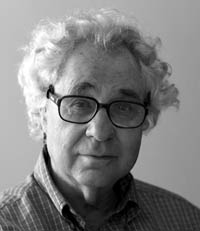
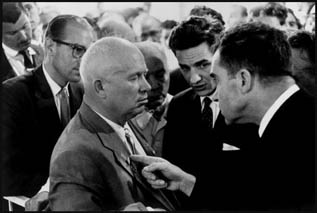

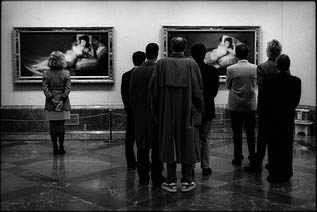
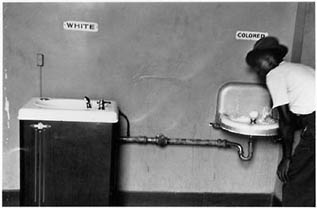
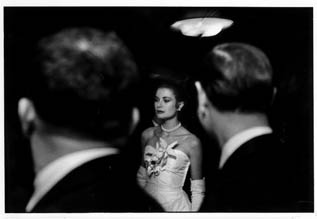
![[TypeKey Profile Page]](http://www.portlandart.net/nav-commenters.gif)